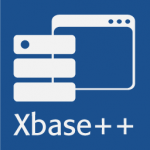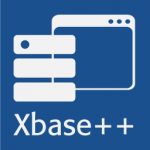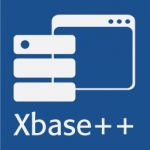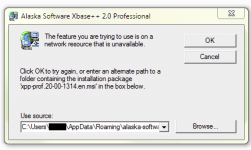Articles
I Love Xbase++ (ILX)
The portal for Xbase++ developers worldwide
You often read "ISAM" in newsletters and other communications from Alaska Software. And many people have heard it or know it from the inside out, but someonly have a vague idea of what it means. If you belong to this group, then it's worth reading this short article.
The good news first: if you...
Background
The XbpHtmlViewer2 class has a data folder that serves as an integral mechanism for session isolation. This feature is critical for applications using the class, which internally relies on the Microsoft WebView2 runtime. By ensuring that every process employing XbpHTMLViewer2...
In this article we will have a deeper look into how to implement different types of REST APIs using Xbase++ 2.0. We assume that a user management REST API exposes two endpoints.:
1. "POST /users" - This creates a new user. For this request, we need to send user data in the request body. The API...
Let's start and create an example where we'll retrieve posts from a public REST API, such as JSONPlaceholder which is a free online REST API that you can use for demonstration and testing purposes.
Here's the URL endpoint to retrieve posts: https://jsonplaceholder.typicode.com/posts
Now, let's...
The Asset Manager integrated into the Xbase++ Workbench provides an easy interface for viewing, (de-) installing and updating the assets being used in your projects. Behind the scene, the Asset Manager in conjunction with the Workbench, performs the following tasks for you:
Manage asset...
Background
One of the largest differences in how data is managed between SQL and ISAM is how deleted records are handled. In short:
ISAM: does mark a record as deleted. This way it is out of scope. To really get rid of the record you need to do a time consuming PACK operation.
SQL: does really...
Using native SQL for manipulating data as well as structure (schema) of ISAM-emulated tables is a supported scenario, for example, for being able to share data with non-Xbase++ applications. In the following, the potential pitfalls and general requirements are discussed which must be put into...
Background
The PGDBE automatically tracks record locks in ISAM-emulated tables, which are set by clients connected to the PostgreSQL server. This is done with the help of the __lock_owner field in the table's meta data. However, when a client dies unexpectantly, has it's network go down or does...
Background
Since the ISAM emulating tables of the PostgreSQL DatabaseEngine are in fact regular SQL tables, it is possible to manipulate them using SQL statements. However, some SQL operations are problematic, as they may lead to inconsistent/incorrect ISAM behavior. In the following, we will...
Comments for Xbase++ 1.9 users
1. Support for projects with targets in multiple directories
Beginning with Xbase++ version 2.0, complex project scenarios involving targets located in different directories are fully supported. This required changes in the way the targets and the source files...
Background
The Xbase++ PostgreSQL DatabaseEngine provides two different access method to data. First, the ISAM emulating approach which works with dedicated SQL tables only. These SQL tables need to be created using ISAM commands like DbCreate/INDEX ON/OrdCreate or have been upsized from...
Background
Sometimes, an application may exhibit symptoms which are hard to understand without having information about the internal state, the workflow and timing of operations. This was not an issue with desktop applications as these basically follow the action->reaction principle. Anybody who...
Background
The Update Manager in the Xbase++ Workbench usually provides a seamless update experience; after clicking "Download and Install", the update process usually runs through without further user interaction. However like all processes, it can fail. This article provides some background...
Introduction
Email providers such as Google GMail allow authentication of the Smtp and Pop3 client via the OAuth2 security protocol. Furthermore, it is foreseeable that sooner or later other authentications will no longer be allowed. Google has already announced this step.
The OAuth2 security...
Introduction
This article assumes knowledge of how to use the Asset Manager of the Xbase++ Workbench. You will find an introduction to the Asset Manager of the Xbase++ Workbench in the article Xbase++ Workbench Asset Management.
The Xbase++ OAuth2 asset implements the protocols for the OAuth2...
Introduction
Xbase++ comes with so-called assets. You can consider an asset as a reference implementation. The idea of assets is to formalize the packaging of libraries, frameworks, etc. beyond the Xbase++ core product featureset. In practice, assets are there to clean up the project chaos and...
Problem description
The Xbase++ ISAM emulation uses a native PostgreSQL sequence to calculate the next record number for append operations. Therefore the success of a DbAppend()/APPEND directly depends on the correctness of that PostgreSQL sequence. As a matter of fact the sequence can become...
Background
The PostgreSQL columns of type TEXT and BYTEA allow the storage of large binary data (e.g. PDF documents or images) up to 1GB. If such column types are used in a table their data is accessed like any other data of the record when using the Xbase++ ISAM emulation. With each...
In a std I/O application, output occurs to the current console. The font used for outputting text into the associated window is controlled by the system and can be changed via the console properties.
The following function can be used to determine the size of the font set for the window...
By default the Xbase++ WebHandler does negotiate the content type encoding automatically. The following simple AddressService returns a Object and leaves the content negotiation up to the WebHandler and the request sending party. The great benefit of that approach is that your service interfaces...


















